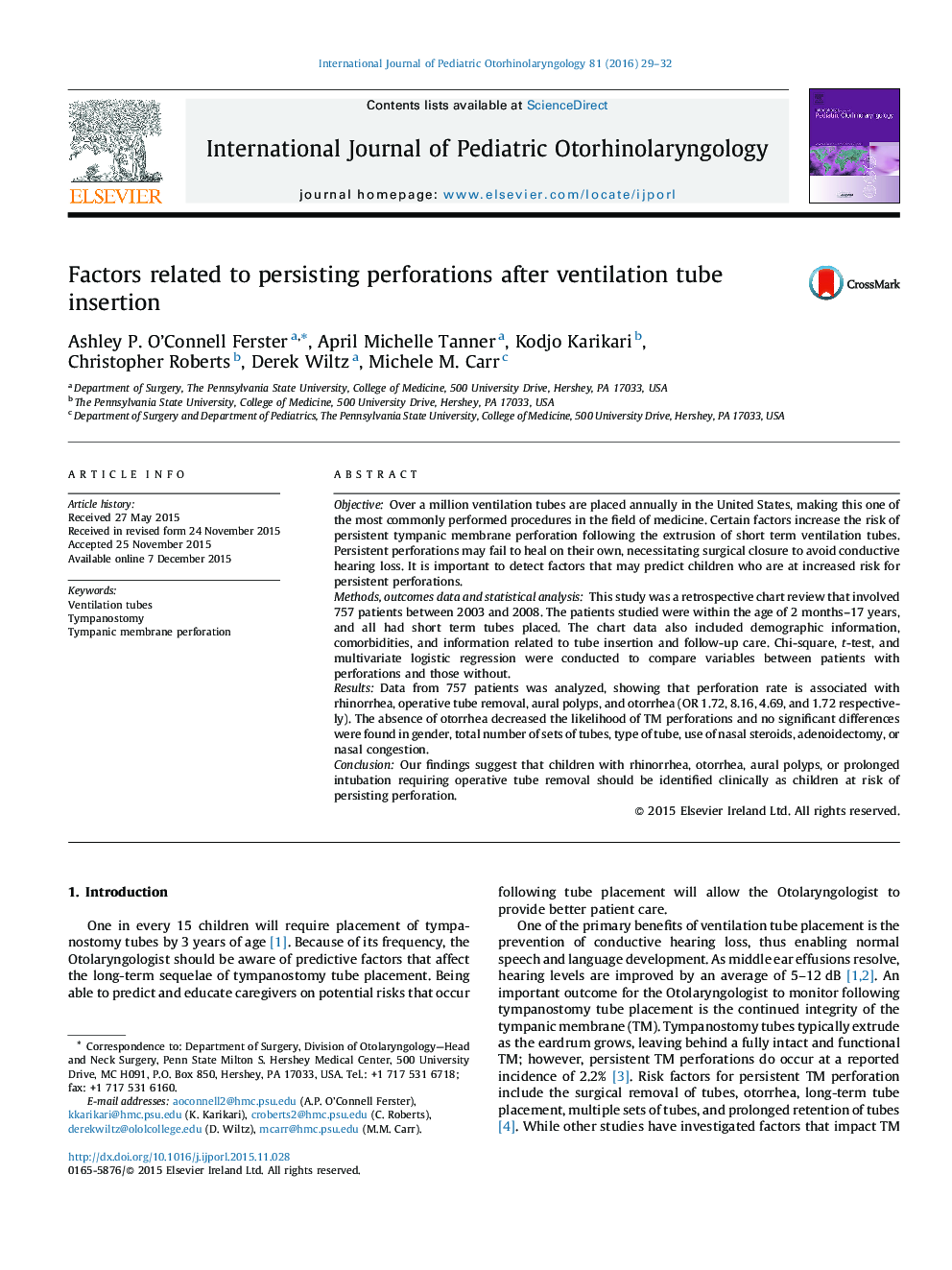| Article ID | Journal | Published Year | Pages | File Type |
|---|---|---|---|---|
| 4111520 | International Journal of Pediatric Otorhinolaryngology | 2016 | 4 Pages |
ObjectiveOver a million ventilation tubes are placed annually in the United States, making this one of the most commonly performed procedures in the field of medicine. Certain factors increase the risk of persistent tympanic membrane perforation following the extrusion of short term ventilation tubes. Persistent perforations may fail to heal on their own, necessitating surgical closure to avoid conductive hearing loss. It is important to detect factors that may predict children who are at increased risk for persistent perforations.Methods, outcomes data and statistical analysisThis study was a retrospective chart review that involved 757 patients between 2003 and 2008. The patients studied were within the age of 2 months–17 years, and all had short term tubes placed. The chart data also included demographic information, comorbidities, and information related to tube insertion and follow-up care. Chi-square, t-test, and multivariate logistic regression were conducted to compare variables between patients with perforations and those without.ResultsData from 757 patients was analyzed, showing that perforation rate is associated with rhinorrhea, operative tube removal, aural polyps, and otorrhea (OR 1.72, 8.16, 4.69, and 1.72 respectively). The absence of otorrhea decreased the likelihood of TM perforations and no significant differences were found in gender, total number of sets of tubes, type of tube, use of nasal steroids, adenoidectomy, or nasal congestion.ConclusionOur findings suggest that children with rhinorrhea, otorrhea, aural polyps, or prolonged intubation requiring operative tube removal should be identified clinically as children at risk of persisting perforation.
